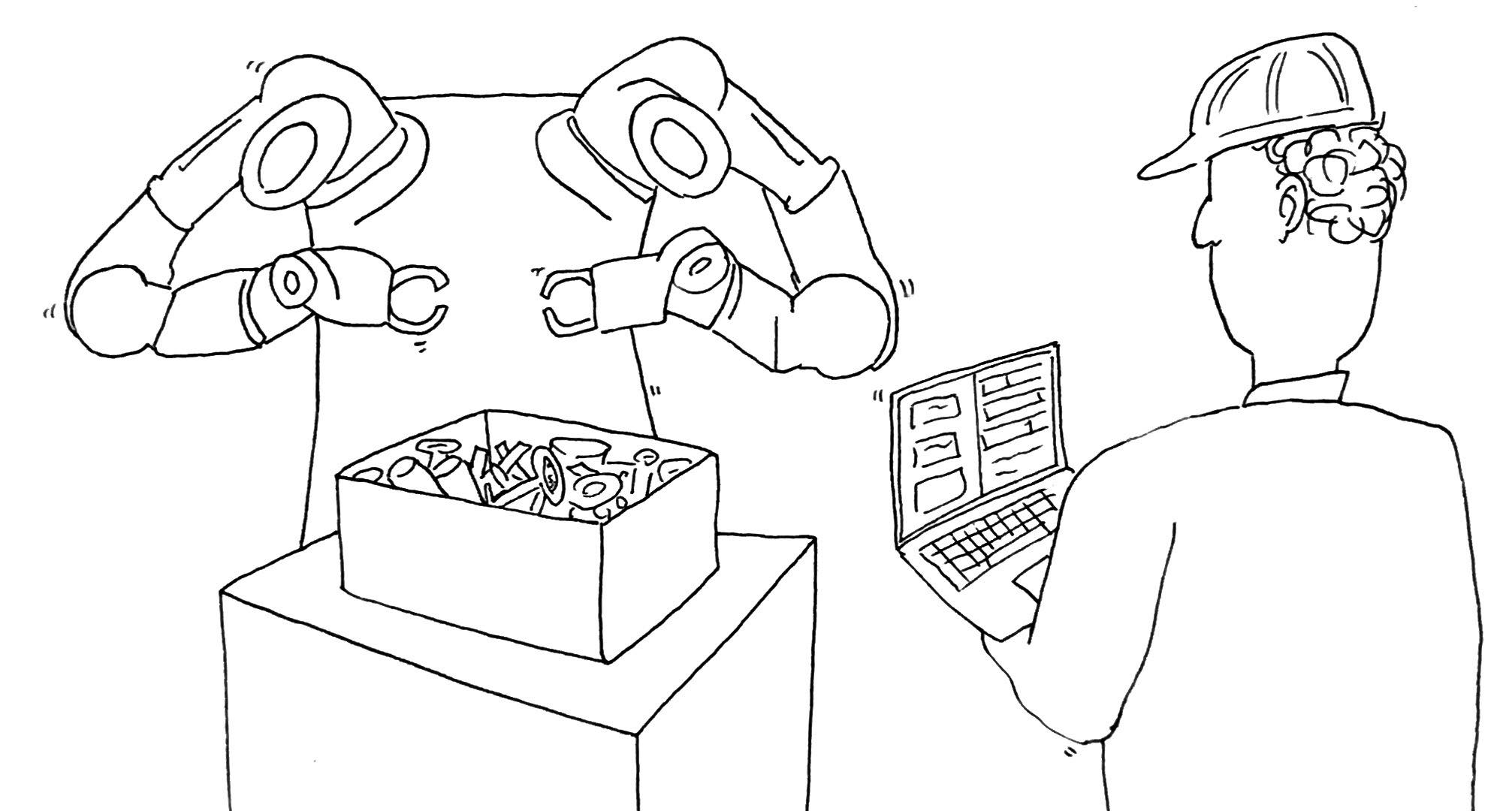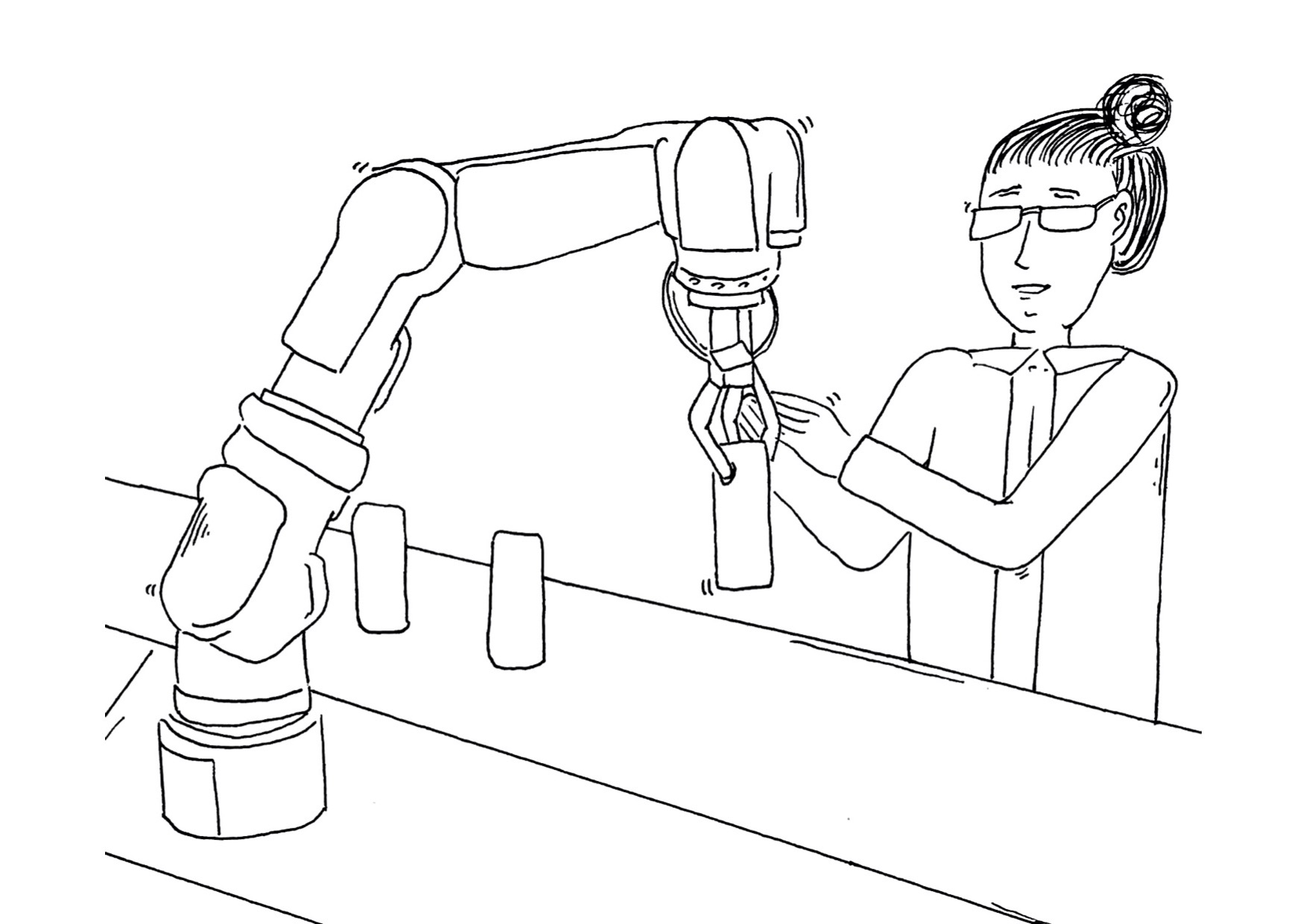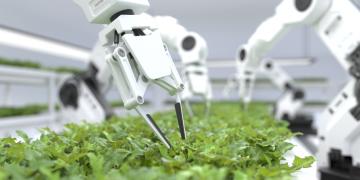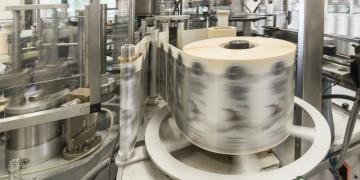Advantages
Collaborative robots are flexible, easy to install and relocate
Their small size makes it easy to assemble, disassemble and relocate, move it across the factory without changing the layout of the production. As for programming, kinesthetic guiding (hand guiding) makes robot programming accessible to everyone, not just engineers. Just by pressing a button on the teaching pendant (the controller of the robot), hand guiding lets the user move the arm around in space freely, thus assigning the task himself. The demonstrated path is then recorded and can be accessed from the teaching pendant for further programming, which is usually intuitive. Such a process can take up to an hour.
The quick changeover time makes collaborative robots particularly interesting for SMEs (small-medium-sized enterprises) that have many different kinds of products produced at a low volume.
Cobots are safer than industrial robots
A major advantage of a cobot over a six-axis robot is that they don’t need a dedicated work cell, meaning there is no need for fences or light curtains (depending on the application, this is not always the case). That is because the robot’s joints are force limited. This means that each joint is equipped with a force sensor which adds a quick reaction in case of collision, making the robot stop. Moreover, external sensors such as laser sensors can be added to slow down or stop the robot when a person approaches the robot.
Cobots are cost-effective
Collaborative robots may be cheaper than an industrial robot (mainly because of their difference in size), although it’s not only about the robots’ cost but the investment as a whole. If all the side factors are taken into account, the difference in cost becomes even bigger. For example, as mentioned above, the lack of need for a work cell, whatever that implies (hardware, human labor and time) is cost-effective. In addition, employees do not need to undergo training and there is no need for a robotics expert to be present to oversee or maintain. It is optional, as opposed to industrial robots. ROI (return of investment) takes less than a year for cobots whereas for six-axis robots, it may take up to 18 months.
Cobots can be two-armed – and perform tasks even faster
A feature that a few companies have added to cobots is a second arm, which is something not available in traditional industrial robots. The idea is that two arms can prove useful in delicate tasks like assembly of small parts (e.g. electronics parts) or tightening screws, increasing speed and flexibility as a result. Parallel bin picking could be another application. Bin picking, the process of picking up small parts in random poses from a bin, can be executed faster with two robotic arms. A reason why two-armed cobots are not so popular yet is the complexity of coordinating the two arms to operate in tandem.

Disadvantages
Cobots are not a good choice when it comes to higher loads
Flexibility comes with a price. Cobots typically handle small payloads of 3 to 10 kg although some models can handle up to 35kg. On the contrary, some six-axis robots have a handling capacity of up to 2 tons, but it also depends on the application. One thing is for sure: Cobots are not meant for heavy duty applications.
Cobot speed is limited
As safety happens to be the main focus of a cobot, it cannot be combined with high-speed, especially when extra safety measures are taken, like mentioned above. A typical cobot’s speed is 250mm per second, four times less than a traditional industrial robot. When users interact with the cobot, its speed is reduced to embrace safety – at the expense of cycle time. Therefore, applications which demand high speed are typically not recommended for cobots.
Cobots might not be as efficient as six-axis robots
Programming with hand guiding might be convenient but it also translates to human motions (demonstrated by the employee), which might not be the optimal solution in some cases. For example, if the task requires very precise and delicate movements, human users might not be able to instruct the cobot properly. On the other hand, industrial robots create the trajectories internally through programming, producing faster and smoother, more optimized paths as a result.
Cobots are not entirely independent
A robot-human synergy has its drawbacks. Even though a cobot can work 24/7 (at least in principle), its need for human assistance or supervision is still there when everyone leaves the factory at night. In contrast, industrial robots can work at full capacity without human employees.
Safety approval of cobots can be troublesome
The safety approval of a cobot can be troublesome, not only because there exists a great variety of safety regulations, but also due to the fact that the relocation and changes in the cobot’s tasks and/or change of tool may call for a new safety certification. This has to be done by a notified body as documentation of the CE-marking. For example, if the cobot has a new gripper with pointy edges installed, its original function is considered changed. Therefore, one has to get a renewed safety approval which costs time and money.
Conclusion
Cobots should not be feared by employees. They are not there to replace them but to work alongside them. Furthermore, they are a perfect solution for many SMEs (medium sized companies) due to their low cost. Every new technology has its limitations though and those shall be carefully examined before proceeding to such an investment.











